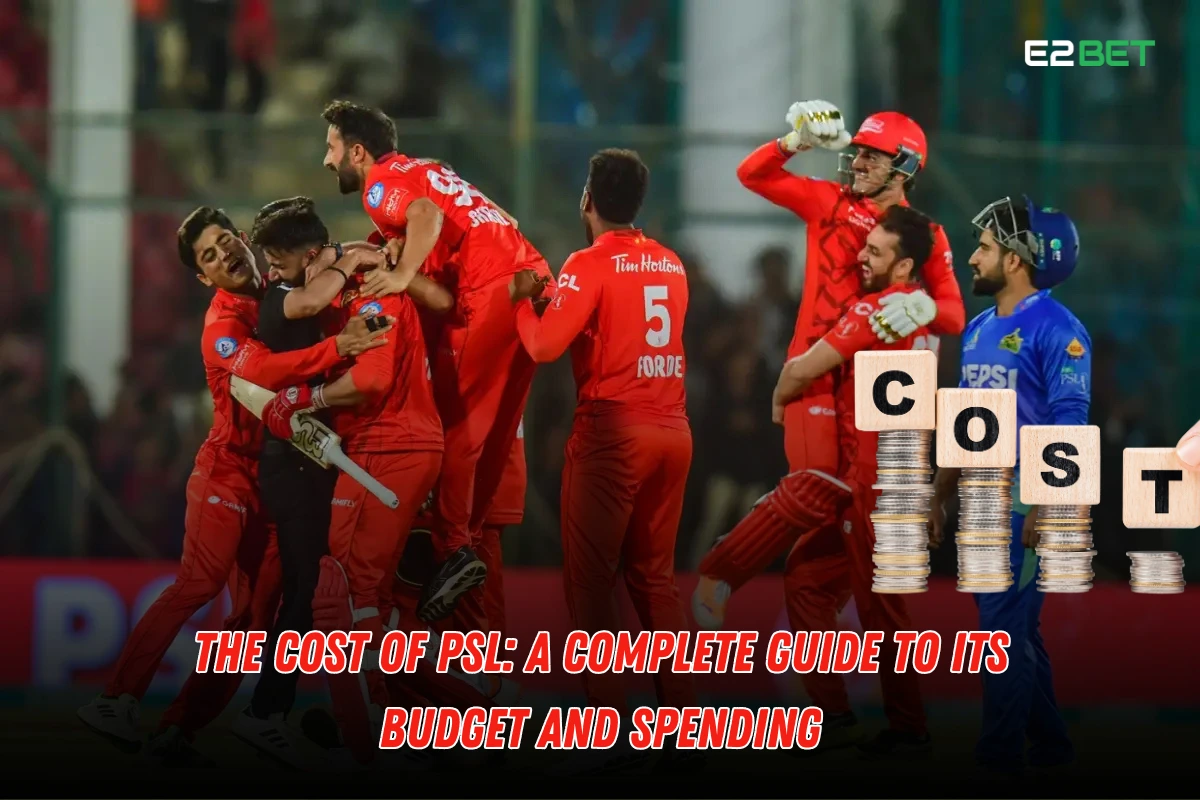The Pakistan Super League (PSL) has emerged as one of the most thrilling cricket leagues globally, attracting millions of fans and generating significant revenue. With a carefully crafted budget and diverse revenue streams, PSL has revolutionized cricket in Pakistan. But what goes into organizing this mega event? This guide dives into the financial breakdown of PSL, covering its budget, revenue streams, and economic impact. Whether you’re curious about how much PSL franchises pay or the economic benefits of PSL, you’re in for a treat.
Breaking Down the PSL Budget
Franchise Fees
Franchise owners are the backbone of PSL’s financial structure. At its inception, teams paid initial franchise fees ranging from $5 million to $25 million. These fees, along with annual renewals, ensure a steady income for the league. If you’ve ever wondered, “How much do PSL franchises pay?”, this is a key factor in the overall budget.
Player Salaries and Draft System
PSL’s player salary structure is designed to ensure balance and competition. The league uses a draft system, dividing players into categories like Platinum, Diamond, Gold, and Emerging. Platinum players in PSL, who are often international stars, earn up to $200,000. This system not only keeps costs in check but also attracts top talent from around the world.
Event Management Costs
Hosting PSL matches involves significant expenses. Stadium rentals, maintenance, and security top the list. Security measures are especially crucial in Pakistan, adding millions to the event’s cost. If you’re looking at the major expenses in PSL, these factors play a pivotal role.
Marketing and Promotions
PSL’s marketing campaigns are designed to captivate cricket fans worldwide. From TV commercials to viral social media posts, the league spends heavily to ensure maximum visibility. Digital marketing services and influencer collaborations further enhance PSL’s reach, making it a global spectacle.
Broadcasting Rights and Revenue
Broadcasting deals are a cornerstone of PSL’s financial success. With lucrative agreements with major networks and a growing PSL YouTube channel, the league ensures fans never miss a moment. Broadcasting costs, however, remain a significant part of the PSL budget.

Revenue Streams of PSL
Sponsorship Deals
Sponsorship is one of the key revenue sources for PSL. Title sponsors like HBL contribute millions annually. Each team also secures individual sponsorships, which significantly boost their budgets. These deals are essential for the league’s financial sustainability.
Ticket Sales
Ticket sales play a critical role in PSL’s revenue. With affordable prices catering to all fans, stadium attendance contributes millions. If you’re exploring how PSL earns revenue, ticket sales are a direct and impactful source.
Merchandise and Licensing
PSL-themed merchandise, including PSL jerseys, caps, and accessories, are highly sought after by fans. Licensing agreements further add to this revenue stream, ensuring PSL’s financial health.
Digital Platforms and Fan Engagement
In the digital era, PSL has tapped into platforms like YouTube and Facebook, earning through ads and live streaming. Fan engagement campaigns on social media not only attract sponsors but also generate additional income.
PSL’s Economic Impact
Boost to Local Economy
The economic benefits of PSL extend beyond cricket. The league boosts tourism, fills hotels, and creates thousands of jobs, particularly in the hospitality and transportation sectors. It’s a prime example of how sports can uplift local economies.
PSL vs. Other Leagues’ Budgets
While PSL’s budget is smaller than leagues like IPL, it remains profitable due to its efficient structure. Comparing PSL vs. IPL budgets, PSL focuses on maximizing returns with minimal expenses, making it a financial marvel.
Challenges in Managing PSL’s Budget
Fluctuating Exchange Rates
PSL’s reliance on international payments, such as player salaries, makes it vulnerable to exchange rate fluctuations. Managing these variables is a constant challenge for organizers.
Political and Security Issues
Ensuring safety during matches involves hefty security expenses. This is a significant cost for a league held in Pakistan, where safety measures are non-negotiable.
COVID-19’s Financial Impact
The pandemic brought unexpected challenges to PSL. Matches were played in empty stadiums, slashing ticket revenues. Additionally, biosecure bubbles increased operational costs, reflecting the resilience of PSL’s financial structure.
Future Projections for PSL Spending
Expanding Franchises
PSL is set to grow, with plans to add more teams. While investing in new franchises increases costs initially, it also boosts the league’s long-term revenue potential.
Investment in Youth Development
A significant portion of the PSL budget goes toward nurturing young talent. The league’s academies and training programs ensure a steady stream of skilled players, securing its future.
Increasing Global Viewership
Expanding PSL’s global footprint is a priority. Digital marketing campaigns and international broadcasting deals aim to bring PSL into the homes of cricket fans worldwide.
Conclusion
PSL is not just a cricket league; it’s a financial juggernaut driving growth and development. By balancing expenses and maximizing revenue through diverse streams like sponsorships, merchandise, and broadcasting rights, PSL has become a case study in effective financial management. With future plans focusing on expansion and global viewership, PSL is poised for even greater success.
FAQs
Q1. How much does it cost to host PSL?
Ans: Hosting PSL costs millions, with major expenses including player salaries, stadium rentals, and security measures.
Q2. What are the key revenue sources for PSL?
Ans: PSL earns from sponsorships, ticket sales, merchandise, broadcasting rights, and digital platforms.
Q3. How are player salaries structured in PSL?
Ans: Players are categorized into tiers like Platinum, Diamond, and Gold, with salaries ranging up to $200,000 for top-tier players.
Q4. Is PSL’s budget bigger than IPL’s?
Ans: No, IPL has a significantly larger budget. However, PSL remains highly profitable due to its efficient cost management.
Q5. How does PSL impact Pakistan’s economy?
Ans: PSL boosts tourism, creates jobs, and drives revenue for local businesses, making it a vital part of Pakistan’s economy.